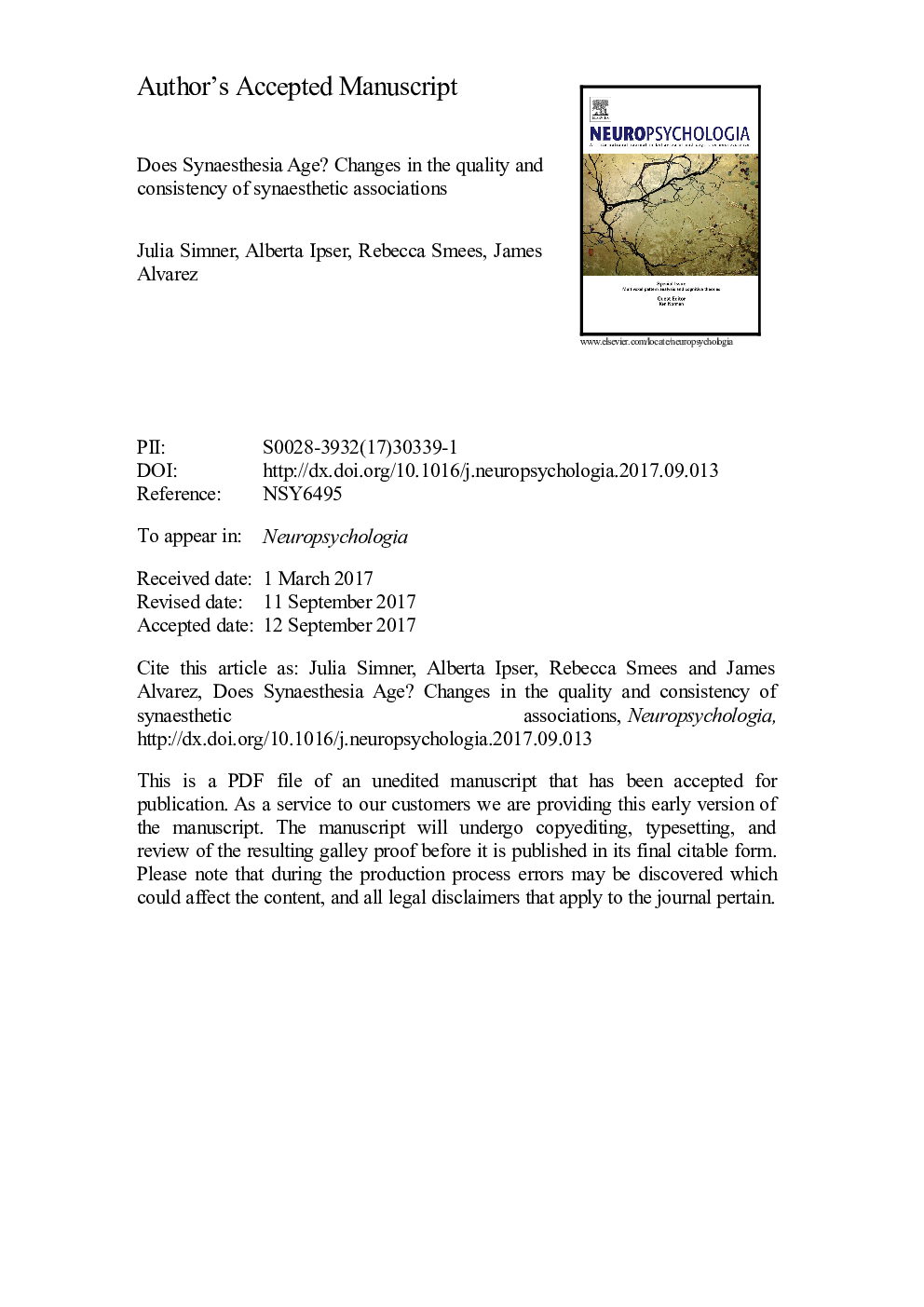| Article ID | Journal | Published Year | Pages | File Type |
|---|---|---|---|---|
| 7318452 | Neuropsychologia | 2017 | 41 Pages |
Abstract
Developmental grapheme-colour synaesthesia is a rare condition in which colours become automatically paired with letters or digits in the minds of certain individuals during childhood, and remain paired into adulthood. Although synaesthesia is well understood in younger adults almost nothing is known about synaesthesia in aging. We present the first evidence that aging desaturates synaesthetic colours in the minds of older synaesthetes, and we show for the first time that aging affects the key diagnostic measure of synaesthesia (consistency of colours over time). We screened ~ 4000 members of the general population to identify grapheme-colour synaesthetes, targeting both younger and older adults. We found proportionally fewer older than younger synaesthetes, not only because fewer older people self-reported the condition, but because fewer also passed the objective diagnostic test. We examined the roots of this apparent decline in grapheme-colour synaesthesia, finding that the internal mental colours of synaesthetes become less saturated in older subjects, and importantly, that low-saturated colours are linked with test-failure. We discuss what these findings mean for a novel field of aging and synaesthesia research, in terms of the lifespan development of synaesthesia and how best to diagnose synaesthesia in later life.
Keywords
Related Topics
Life Sciences
Neuroscience
Behavioral Neuroscience
Authors
Julia Simner, Alberta Ipser, Rebecca Smees, James Alvarez,
